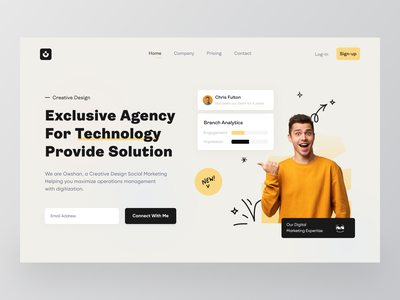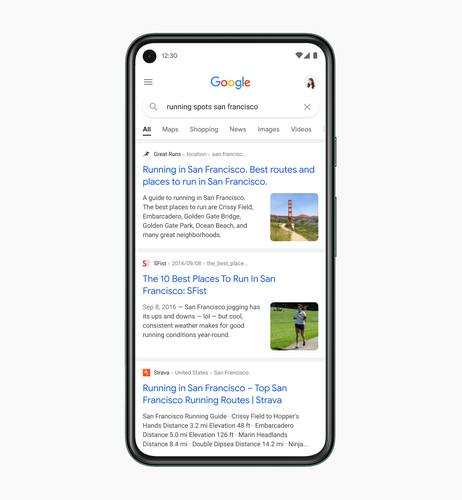
It is essential to make your website responsive. Many web designers believe that designing websites for computers and mobile devices should take precedence over other tasks. It is wrong. The two versions of your website must be created simultaneously. Also, the design must undergo double reflection. Responsive websites require careful consideration of content and layout and must be developed according to the specific screen size. Here are some tips to make your website responsive.
Optimiser son site web en RWD
Optimising your website will help generate traffic, sales and leads. There are many things that go into optimizing your site. These include content, usability, speed, and how fast your site loads. Ultimately, it is important to have a defined method and set objectives. To make your website more effective, incorporate the elements below. Continue reading to learn more. And, don't forget to test your site for performance and accuracy!

An optimized website will get better rankings in search engines. It also helps your site rank in search results, attracting more potential clients. When creating or redesigning a website, you must think about optimisation. Here are some considerations:
Adapter son site web en RWD en fonction de la taille de l'ecran
In order to adapt your site web to the different sizes of ecrans, it's important to use media queries. These media queries will determine the size of the ecran, and then apply CSS styles that are specific to the screen size. If you want the text on your site to be the same size regardless of screen size, you can use "max-width 480" media query.
The attribution of size can be done either in percentage or by the fenetre size. This measurement is most often used to determine the proportion of size between the ecran and fenetre. Divide the width and height of the ecran by the screen size to get the screen proportion.
Creer un site web responsive
Website design should be accessible on a variety of devices. It is vital that any website design be responsive. This ensures that it displays properly on all devices. If your website does not have a responsive design you can create a mobile site and give it a unique URL. It is important to think about this because many consumers now surf the web on multiple devices.

A responsive website has an adaptable structure, which means that it can adapt its content and navigation to fit different screen sizes. It means that users won't need to modify their websites in order to look great on different devices. They will also provide users with an optimised user experience. This is a key benefit for many companies. The cost of a responsive site will vary depending on the level of conception and the number of graphic elements, menus, and links that are present on it.
FAQ
How do I choose the right domain name?
It is crucial to choose a great domain name. A great domain name will help people find your site when they search for your product.
Your domain name should be concise, memorable, unique, relevant, and easy to remember. Ideally, you want something that people would type into their browser.
Here are some ideas to help you choose a domain.
* Use keywords relevant to your niche.
* Do not use hyphens (-), numbers or symbols.
* Don't use.net or.org domains.
* Use words that are already used.
* Avoid generic terms like domain or website.
* Check it's always available.
Does A Good Portfolio Make Me More Likely To Be Hired As A Web Developer?
Yes. You must have a portfolio to be considered for a job in web development or design. The portfolio must show examples of your skills and experience.
Portfolios typically include examples of past projects. These samples can show off your ability to do any task. Portfolios should contain everything, from wireframes, mockups, logos and brochures to websites, apps, and websites.
Where can I find freelance web developers?
There are many places you can find freelance web designers or developers. Here are some of the best options:
Freelance Jobs
These sites have job listings that are open to freelance professionals. Some require you to do specific work, while others are open to all types of work.
Elance, for instance, has high-quality job opportunities for programmers, writers, translators, editors and project managers.
oDesk also offers similar features, but focuses more on software development. They have job opportunities in PHP. Perl. Java. C++. Python. JavaScript. Ruby. Android. And.NET developers.
Another option is oWOW. Their website focuses on web and graphic designers. They offer many services, including video editing, programming, SEO, and social media marketing.
Forums online
Many forums offer members the opportunity to advertise themselves and post jobs. DeviantArt is an example of a forum that's dedicated to web developers. If you type in "webdeveloper" into the search bar, you'll see a list containing threads from people looking to assist them with their sites.
How do I design a website.
The first step is to understand what you want your site to do for your customers. What are they looking for when they visit your site?
What problem might they face if your site doesn't have what they are looking for?
Now you need to figure out how you can solve these problems. You also need to make sure that everything on your site looks right. It should be simple to navigate and use.
Your website should be well-designed. It should not take too much time to load. If it takes too many seconds, people won’t be able stay as long. They'll move elsewhere.
You need to consider where your products are located when you build an eCommerce website. Are they all located in the same location? Are they all in one place?
Decide whether you plan to sell one product at a time or several products. Do you want to sell just one type of product or multiple kinds?
These questions will help you decide if you want to build your website.
Now it is time for you to concentrate on the technical aspect of things. How will your website work? Will it be fast enough? Can they access it quickly via their computers?
Will people be able to buy something without having to pay extra? Do they need to register in order to buy anything?
These are vital questions you need to ask. These questions will help you to make the right decisions and move forward.
What technical skills do I need to design and construct my site?
No. You only need to have a basic understanding of HTML/CSS. There are many tutorials available online that can teach both HTML or CSS.
Can I create my own website with HTML & CSS?
Yes! If you've read this far, you should now know how to create a website.
Now that you know how to create the structure of a website, you'll also need to learn some HTML and CSS coding.
HTML stands for HyperText Markup Language. Think of it like writing a recipe for a dish. It would include ingredients, instructions, as well as directions. Similarly, HTML tells a computer which parts of text appear bold, italicized, underlined, or linked to another part of the document. It is the language of documents.
CSS stands as Cascading Stylesheets. It is like a stylesheet that you use to create recipes. Instead of listing out each ingredient and instruction, you write down general rules for things like font sizes, colors, spacing, and more.
HTML tells the browser how a page should look; CSS tells it what to do.
You don't have to be a prodigy if you don’t get the terms. Follow the tutorials and you will soon be creating beautiful websites.
How much does it cost for a website to be built?
The answer depends on what you are trying to achieve with your website. Google Sites might be free if your website is limited to information about you or your company.
If you want to attract more visitors to your website, however, you will need to pay for something stronger.
A Content Management System (like WordPress) is the best solution. These programs let you create a website with no programming skills. And because third-party companies host these sites, you won't need to worry about getting hacked.
Another way to build a website is to use a service called Squarespace. Squarespace offers a variety plans that range from $5 per person to $100 per person, depending on what information you want to include.
Statistics
- Is your web design optimized for mobile? Over 50% of internet users browse websites using a mobile device. (wix.com)
- It's estimated that in 2022, over 2.14 billion people will purchase goods and services online. (wix.com)
- The average website user will read about 20% of the text on any given page, so it's crucial to entice them with an appropriate vibe. (websitebuilderexpert.com)
- Did you know videos can boost organic search traffic to your website by 157%? (wix.com)
- In fact, according to Color Matters, a signature color can boost brand recognition by 80%. There's a lot of psychology behind people's perception of color, so it's important to understand how it's used with your industry. (websitebuilderexpert.com)
External Links
How To
What is website Hosting?
Website hosting describes where visitors go when they visit a site. There are 2 types.
-
Shared Hosting - This is your cheapest option. Your website files will reside on a server belonging to someone else. Customers visit your website and send their requests over the Internet to this server. The request is sent to the server's owner who then passes it on to you.
-
Dedicated hosting - This is the most expensive option. Your website is hosted entirely on one server. Your traffic is private because no other websites have shared space on this server.
Shared hosting is preferred by most businesses because it's cheaper than dedicated hosting. The company hosting the server will provide the resources necessary to manage your website.
But there are pros and cons to both options. Here are the differences:
Shared Hosting Pros
-
Lower Cost
-
Simple to Setup
-
Frequent Updates
-
It can be found on many web hosting companies
Hosting shared can be as low as $10 per month. But keep in mind that this price usually includes bandwidth. Bandwidth refers to the amount of data you can transfer across the Internet. Even if you upload only photos to your blog you might still have to pay more for large amounts of data that you transfer through your account.
You'll soon discover why you paid so much more for your previous host when you get started. The majority of shared hosts offer limited customer support. Their techs will occasionally walk you through setting up your site, but you're on your own after that.
You'll want to look into a provider that offers 24-hour phone support. They'll take care of any issues that come up while you sleep.
Dedicated Hosting Cons:
-
More Expensive
-
Less Common
-
Specific Skills Required
With dedicated hosting, everything you need for your website is at your fingertips. You won’t need to worry whether you have enough bandwidth or enough RAM (random address memory).
This means you'll have to spend more upfront. You'll soon realize that your business is self-sufficient once it's online. You'll be able to manage your servers effectively.
Which Is Better For My Business:
The answer depends on what kind of website you want to create. If you are selling products, shared hosting may be the best option. It's simple to set it up and keep it updated. Because you share a server, you will most likely receive frequent updates.
However, dedicated hosting is the way to go if you want to build a community around your brand. You can put your efforts into building your brand, and not worry about how to handle your traffic.
If you're looking for a web host that offers both options, we recommend Bluehost.com. Bluehost.com provides unlimited monthly data transfer, 24/7 support, free domain registration and a 30-day money back guarantee.